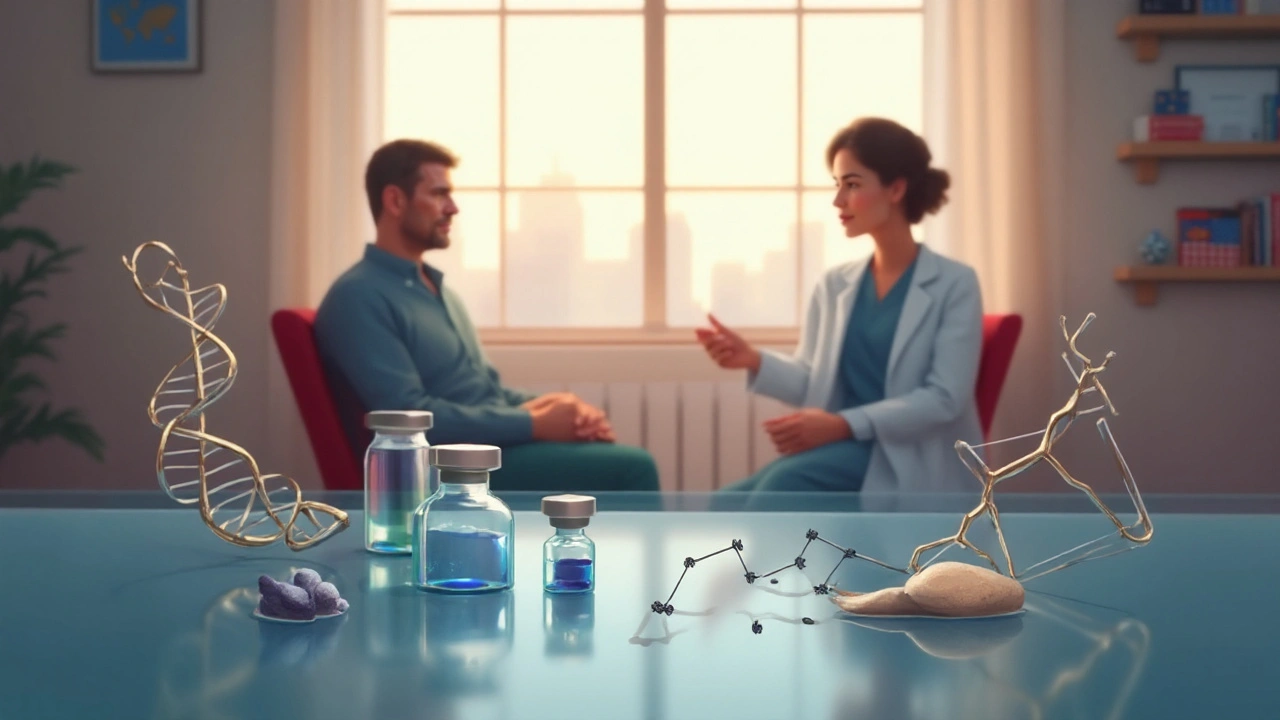Prostate Cancer Treatment Options You Need to Know
Getting a prostate cancer diagnosis can feel like a punch to the gut. The first question that pops up is usually, "How am I going to treat this?" There are several solid ways to fight the disease, and the right choice depends on the tumor’s size, how fast it’s growing, and your overall health. Below we break down the main treatments in plain English, so you can talk to your doctor with confidence.
Surgery – Cutting Out the Cancer
When the tumor is confined to the prostate, many doctors recommend a radical prostatectomy. This is an operation that removes the whole gland. It can be done through an open cut, a small incision (laparoscopic), or with a robot‑assisted system. The surgery aims to get all the cancer cells out in one go.
Pros: high chance of removing all visible cancer, quick PSA drop, and good long‑term control if the cancer hasn’t spread. Cons: risk of urinary leakage, erectile dysfunction, and a recovery period of a few weeks. If you’re relatively young and healthy, surgery often tops the list because it gives a clear “all done” feeling.
Radiation – Targeting Cancer with Light
Radiation therapy uses high‑energy beams to kill cancer cells while sparing most surrounding tissue. Two common types are external beam radiation (EBRT) and brachytherapy, where tiny radioactive seeds are placed inside the prostate.
Pros: non‑invasive (no big cuts), can be used for larger or more advanced tumors, and often preserves sexual function better than surgery. Cons: treatment stretches over several weeks, may cause bowel irritation, fatigue, or mild urinary symptoms that improve over time.
Hormone Therapy – Cutting Off the Fuel
Prostate cancer cells grow fast when they get a lot of testosterone. Hormone therapy, also called androgen deprivation therapy (ADT), lowers testosterone levels with drugs or surgery (removing testicles). This slows tumor growth and can shrink the gland before radiation or surgery.
Pros: helps shrink big tumors, works well with radiation, and can delay disease progression. Cons: hot flashes, loss of muscle mass, bone thinning, and mood changes. It’s usually not a stand‑alone cure for early‑stage cancer but a useful sidekick.
Combining Treatments – Tailoring to You
Many men end up with a mix of approaches. For instance, a doctor might suggest surgery followed by a short course of radiation if the pathology shows aggressive features. Or, a man with a medium‑risk tumor might get radiation plus hormone therapy to give the cancer a double punch.
The key is to look at the Gleason score (a grade that tells how aggressive the cancer looks), PSA level, and imaging results. These numbers guide whether you need just one treatment or a combo.
What to Ask Your Doctor
Before you sign off on any plan, fire away with these questions: What is my exact stage and grade? How will this treatment affect my urinary and sexual function? What’s the recovery time? Are there clinical trials that fit me? And, most importantly, what’s the chance of the cancer coming back after this treatment?
Having clear answers helps you weigh the trade‑offs and pick a path that fits your lifestyle and comfort level. Remember, prostate cancer is often slow‑growing, and many men live long, healthy lives after treatment.
Bottom line: surgery, radiation, and hormone therapy each have strengths and downsides. Talk to your urologist, get a second opinion if you want, and choose the plan that feels right for your body and your goals. The more you know, the easier it is to stay in control of your health.
Casodex (Bicalutamide) vs Other Prostate Cancer Drugs - A Detailed Comparison
Sep, 24 2025
Explore how Casodex (bicalutamide) compares with other androgen‑targeting drugs for prostate cancer, covering mechanism, efficacy, side‑effects and choosing the right option.
Read Article→
